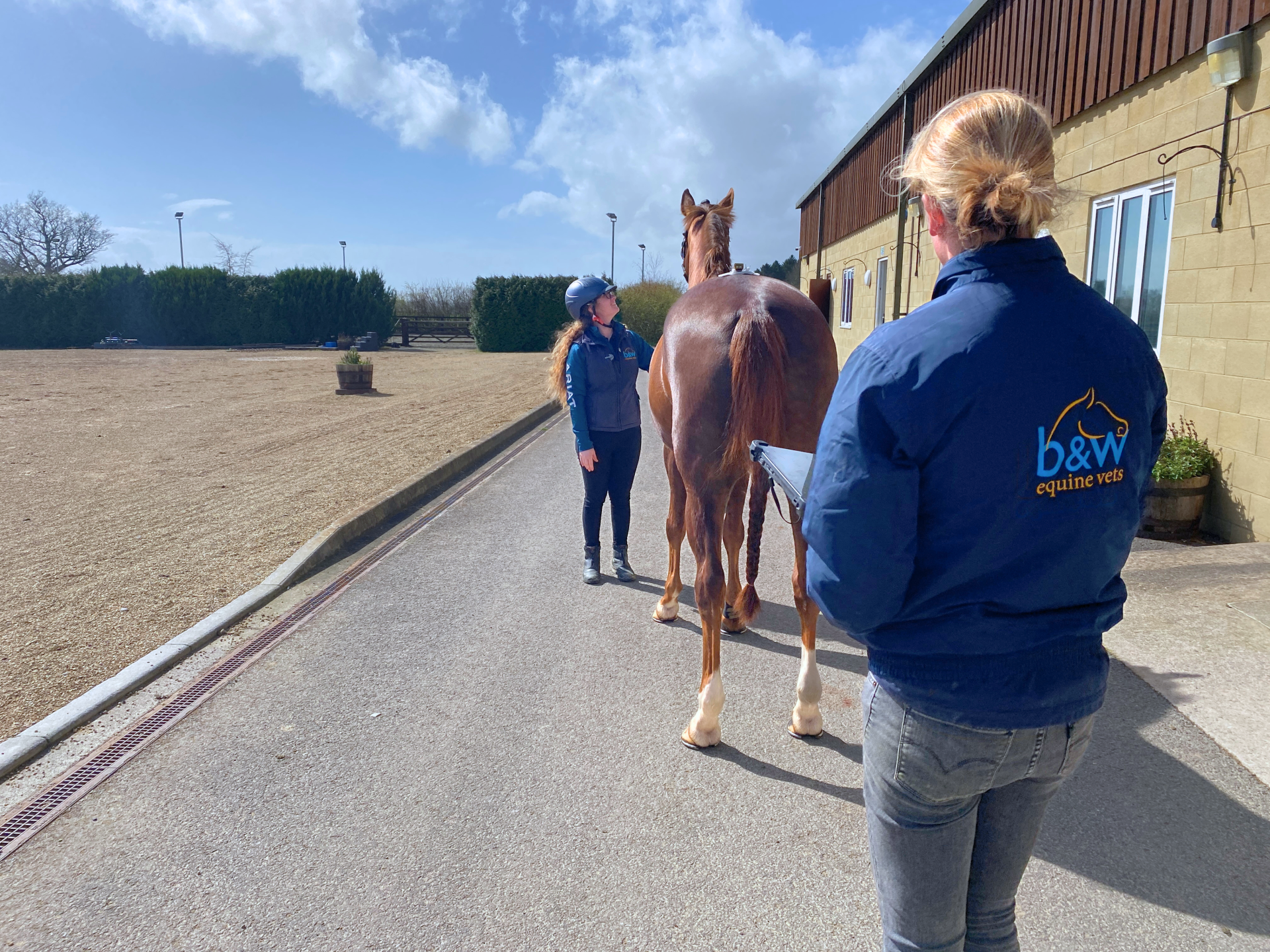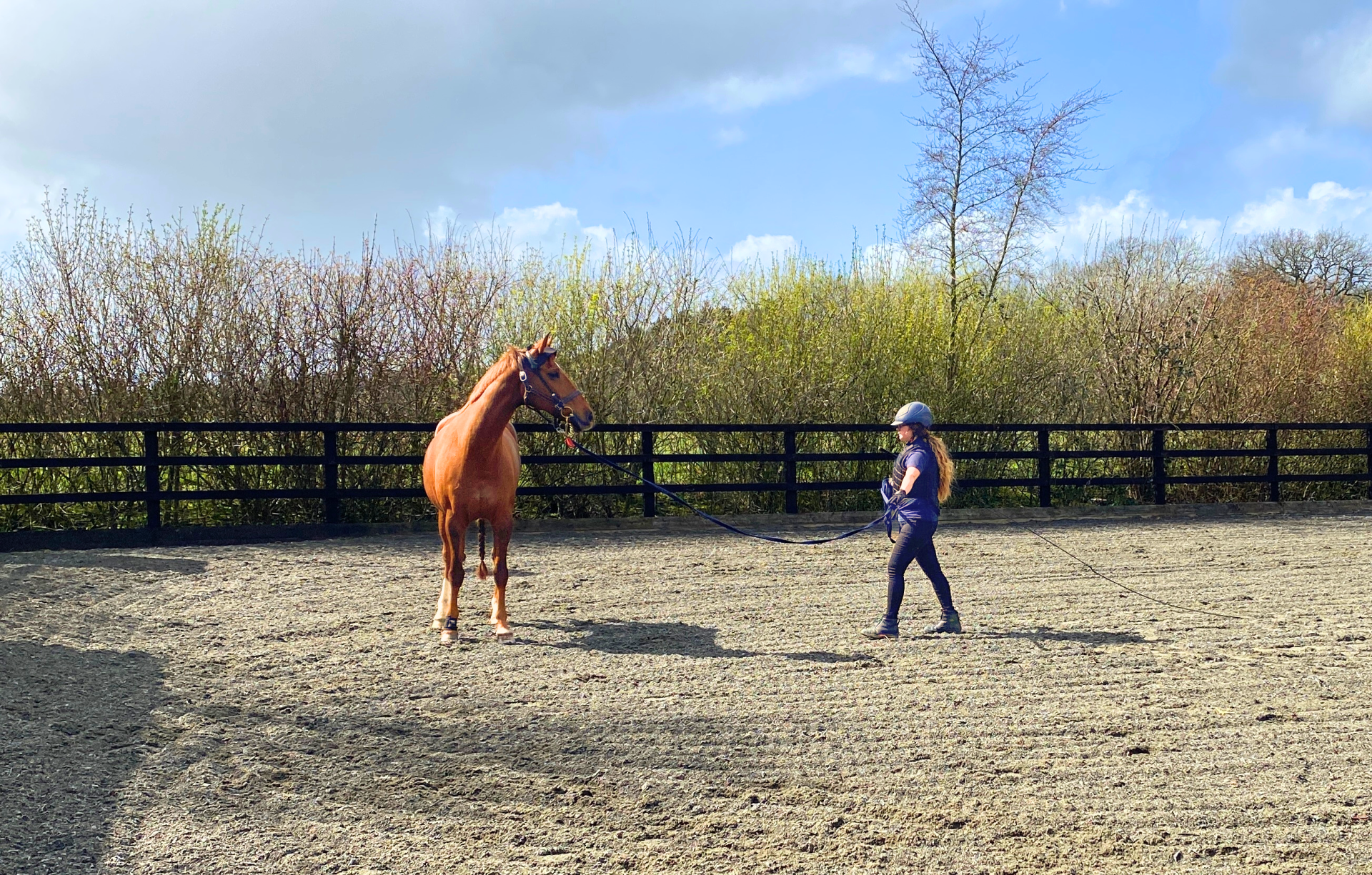Emergency Equine Vet:
Breadstone: 01453 811867
Failand: 01275 392956
Stretcholt: 01278 229129
Willesley: 01666 880501
Lameness could be described in a number of ways; your horse may be not moving "quite right", may seem "unlevel", have a head nod or be under performing. We see a wide variety of cases which may be caused by something as simple as a bruised sole or pus in the foot, ranging through to tendon, ligament or joint problems, as well as lameness caused by wounds, infection or fracture.
Lameness issues can cause pain, worry and lost time. At B&W our aim is to find the cause of the problem, recommend appropriate treatment and get your horse back to normal as soon as possible.
All of our ambulatory vets have the experience and expertise needed to work up the vast majority of lameness cases at your yard. Investigation may involve a number of procedures including:
Lameness Referrals

For more complex cases or cases where extra facilities are required, referral to our equine hospital may be necessary where your horse can be examined by one of our orthopaedic Specialist clinicians. At the hospital your horse will also have access to our state-of-the-art facilities which include a designated firm trot-up and lunge area as well as Martin Collins Activ-track® arena.
Our hospital clinicians provide a thorough lameness investigation service for your horse to establish when the problem occurs and to pinpoint the injury. If your horse is referred to us it is likely that a series of nerve blocks and/or inta-synovial (e.g joint) blocks will be performed. Once your horse's lameness has been localised to a specific area the advanced imaging provided by us may help in providing a specific diagnosis.

The hospital also offers both standard and advanced diagnostic imaging services which enables us to provide comprehensive evaluation. These include:
Following a diagnosis, treatment options will be discussed with you or your vet, if referred, and appropriate treatments carried out.
Treatments vary depending on the individual horse and may include joint medication, remedial farriery and appropriate exercise regimes through to arthroscopic (keyhole) surgery. If surgery is required we have two European Diploma holders in Equine Surgery (DipECVS) with a wealth of surgical experience and expertise.
We also work closely with a local remedial farrier who regularly sees cases at the hospital. We are also happy to discuss cases with, and work alongside, your own farrier.
The Equinosis® Q Lameness Locator
Equinosis® Q with Lameness Locator® software is a real-time, handheld system that enables a vet to objectively identify and quantify lameness in horses. It analyses motion data transmitted by three small sensors which are attached to the horse's head, pelvis and right forelimb.
Equinosis® wireless sensors with 10x more sensitivity than the human eye, track movement accurately to within millimetres. It is particularly useful for complex, multi-limb lameness, objective assessment of potential improvement after diagnostic analgesia and objective assessment of improvement in lameness following treatment.